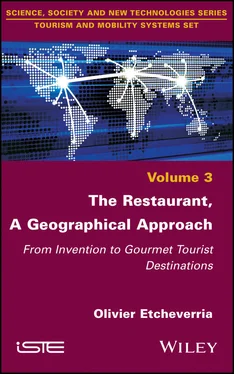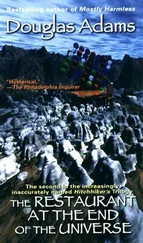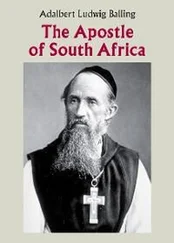This book is structured into five parts. The first part aims to show the urban and, more precisely, Parisian origin of the restaurant. The location logics and the relationship of the restaurant with its places and spaces will be discussed in the second part. Since a significant proportion of urban residents whose frequent restaurants are tourists, the third part focuses on the dynamics of restaurant tourism, the restaurant as a tool of food tourism and, sometimes, as a gourmet tourist destination. The fourth part discusses the role of the restaurant in creating the conditions necessary for local development in urban and rural areas. Finally, the fifth and last part raises the question of the monumentalization and patrimonialization of restaurants.
This attempt at a geographical approach to the restaurant is exciting, rich but risky because of the multidisciplinary dimension of the object. This is why the indulgence of historians and specialists in the topics discussed is solicited.
PART 1
The Restaurant: An Eminently Urban Subject
Before the invention of the restaurant, inns, taverns, caterers, guesthouses and cafés offered food and drink, but the food was random in quality and not very varied in nature. The meal was eaten at a communal table, at restricted times, in an uncomfortable way.
In this context, a new place, intended for eating outside the home, was opened in the city at the end of the 18th Century and presented many original features.
1
The Geographical Origin of the Restaurant: The Urban Environment
1.1. From bouillons…
Originally, the “restaurant” was a cheap broth prepared and enjoyed in the city. Pierre Andrieu thus evokes the craze for the “divine restaurant”:
“The term then applied to bouillons, one of which, the ‘divine restaurant’, was for a long time the most popular. It consisted of a mixture of poultry and very finely minced butcher’s meat, distilled in a still with pearl barley, dry roses and Damascus grapes. In the 18th Century, a doctor named Clarens simplified the formula. According to him, we were to limit ourselves to cooking fat poultry in a little flavored water. Clarens’ recipe was successful and it was this recipe that, when commercialized, was exploited by Boulanger, known as Champ d’Oiseaux, rue des Poulies, at the site of the current rue du Louvre.” [AND 55, p. 26, author’s translation]
In 1765, the Dictionnaire de l’Académie française defined the restaurant as “a food that restores, that repairs forces […]. A restaurant in particular is called a strong restorative consommé, a meat press”. Jean-Robert Pitte points out that:
“Since the late Middle Ages, the word ‘restaurant’ has meant these rich bouillons consisting of poultry, beef, various roots, onions, herbs and, depending on the recipe, spices, candy sugar, toasted bread or barley, butter, as well as products as unusual in appearance as dried rose petals, Damascus grapes, amber, etc.” [PIT 96, p. 771, author’s translation]
1.2. … to the establishment
Gradually, the name of the dish came to designate the place where it was tasted:
“The worldwide success of the word ‘restaurant’ gives the French a just cause for pride. First used to designate a rich and invigorating bouillon, then various small, robust dishes designed to restore weak health or, quite simply, energy reduced by fatigue and hunger, it was only applied at the end of the 18th Century to the establishment where they were served. The founding event of this institution took place in 1765, rue des Poulies, near the Louvre, where a certain Boulanger, known as Champ d’Oiseaux, served ‘restaurants’, i.e. bouillons, but also sheep’s feet in white sauce with a portion under the sign written in Latin…: ‘ Venite ad me, omnes qui stomacho laboratis, et ego vos restaurabo ’.” 1 [PIT 91, p. 157, author’s translation]
The situation reflected Boulanger’s business sense and restaurants grew rapidly. In his Histoire du restaurant en France , Pierre Andrieu quotes, on this subject, P. de la Mésangère:
“Besides the fact that Boulanger sold bouillons, there was food at home, but since he was not a caterer, he could not serve stew. Instead, he served poultry with coarse salt, fresh eggs, etc., and this was served without a tablecloth on small marble tables. Other restaurateurs followed his example, including Wauxhall, at the Colosseum and all the assembly and public celebration venues. Novelty, fashion and above all, high prices accredited them, because a person who would not have dared to sit at a guesthouse’s table would easily pay for the same expensive dinner at the restaurant!” [AND 55, p. 26, author’s translation]
Although the restaurant’s geographical origin is Parisian, Jean-Robert Pitte nevertheless points out that it shares common characteristics with London’s taverns:
“As with many cultural changes, the French restaurant does not have a simple genealogy. It also has English ancestry. The taverns on the other side of the Channel, i.e. the establishments where wine is served and which are pitted against brasseries, are often elegant and famous. One of the most famous and refined London taverns of the 18th Century was owned in the 1670s by a son of a president in the Bordeaux Parliament, Mr. de Pontac. The wine produced by his father on his estate in Haut-Brion was consumed there.” [PIT 91, p. 158, author’s translation]
The name given to one of the first famous Parisian restaurants, La Grande Taverne de Londres , opened by Antoine Beauvilliers in 1782, and sometimes considered as the first “grand restaurant”, illustrates this influence:
“Antoine Beauvilliers brought the profession to its pinnacle. He was also an essential link in the historical geography of French gastronomy, as he was one of the first officier de bouche (chef) of a prince – the Count of Provence, the future Louis XVIII – to establish his own business […] Beauvilliers […] opened a chic restaurant where everybody who was anybody was running around and enabled the high court cuisine to take to the streets. He first established himself at 26 rue de Richelieu, under the name of La Grande Taverne de Londres , then a stone’s throw away, but in the heart of fashionable Paris, in the Valois gallery at the Palais-Royal.” [PIT 91, p. 160, author’s translation]
In Paris à table , Eugène Briffault highlights Antoine Beauvilliers’ reputation at the Palais-Royal:
“Beauvilliers was the one that first attracted the most people. He never made his mark as a chef, but he had a quality that is nowadays considered extinct: he was entirely focused on the people who came to his house for dinner, and constantly went through his rooms, to make sure that his diners were happy. At the slightest doubt, he would have one dish replaced by another, head down to his kitchens, and loudly scold the careless worker.” [BRI 03, p. 91, author’s translation]
For Rebecca L. Spang, Mathurin Roze de Chantoiseau was the first restaurateur. She places the invention of the restaurant at the heart of an original socioeconomic strategy:
“The ‘invention’ of the restaurant, the creation of a new market sphere of hospitality and taste, was but one component of Roze’s plan to fix the economy, repair trade, and restore the health to the body politic […]. Nevertheless, Roze’s role in the invention of the restaurant is particularly significant, for it epitomizes (if only by the variety of its projects) the restaurant’s place in intricate networks of market expansion and commercial growth. Like others of his era, the first restaurateur saw the long-stigmatized mechanisms of trade (the circulation of goods and the stimulation of desires) as potential conduits of social benefit and national improvement. Roze de Chantoiseau, who invented the restaurant while running an information office, attempting to abolish the national debt, and editing a commercial directory, was hardly unique in the range of his interests. In 1766, when this first restaurateur opened his doors, culinary issues were often incorporated into a wide range of discussions.” [SPA 00, pp. 13–14]
Читать дальше












